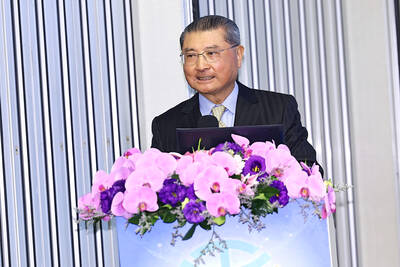Selling the US dollar against a basket of currencies from Malaysia, Singapore and Taiwan is the top trade for next year, as Asian central banks allow faster currency appreciation to offset price pressures, according to Goldman Sachs (GS).
The Asian currencies will also gain as it becomes costlier for the central banks to enter foreign exchange markets, said Jens Nordvig, a senior currency strategist in New York at Goldman Sachs, the world's most profitable securities company.
"We are bullish on the Asian currencies," Nordvig said in an interview on Wednesday. "The central banks need to allow faster gains for the currencies to curb inflation. With US interest rates going lower, it becomes costly for them to" sell local currencies and hold dollar assets.
The Malaysian, Singaporean and Taiwanese currencies will each gain about 5 percent to 10 percent against the dollar in the next year, according to Nordvig.
The Malaysian ringgit has gained 4.5 percent this year against the dollar, the Singapore dollar has risen 5.6 percent and the New Taiwan dollar advanced 0.9 percent over the same period.
The greenback dropped to its lowest level since 1971 this month against a basket of currencies as the US Federal Reserve's 0.75 percentage points in rate cuts since September prompted investors to seek higher returns elsewhere.
Singapore's inflation accelerated last month to 3.6 percent from a year earlier, the highest since 1991, a report showed last Friday. The consumer price index in Malaysia rose 1.9 percent from a year earlier, after gaining 1.8 percent in September, a separate report showed on Nov. 21.
Goldman also recommended that investors sell the pound against the yen next year as growth in the UK slows, pushing the Bank of England to cut its benchmark interest rate from 5.75 percent.
The bank also advised buying a basket of Brazil's real, Russia's ruble and the Czech koruna against a basket of the US dollar, the Canadian dollar and the pound.
Investors should also hold short positions for gold on expectations that current concerns about credit-market losses tied to US subprime-mortgages will subside, Goldman said. A short position is a bet that an asset price will decline in the future.
"Gold has been one of the main beneficiaries of the financial turmoil that erupted this past August," wrote Goldman analysts, led by Jim O'Neill in London, in a research note on Wednesday.
"We would now use a short exposure in gold, expressed in US dollars, to capitalize on a gradual relaxation of credit concerns in the financial sector over the coming months."
Gold rose to within 0.5 percent of a record US$850 an ounce on Nov. 7 as crude oil prices -- at their highest level ever -- spurred demand for the metal as a hedge against inflation. A weakening dollar also encouraged some investors to buy gold as an alternative investment.
Gold for immediate delivery last traded at US$806.79 an ounce from US$797.60 an ounce late on Wednesday.

When an apartment comes up for rent in Germany’s big cities, hundreds of prospective tenants often queue down the street to view it, but the acute shortage of affordable housing is getting scant attention ahead of today’s snap general election. “Housing is one of the main problems for people, but nobody talks about it, nobody takes it seriously,” said Andreas Ibel, president of Build Europe, an association representing housing developers. Migration and the sluggish economy top the list of voters’ concerns, but analysts say housing policy fails to break through as returns on investment take time to register, making the

‘SILVER LINING’: Although the news caused TSMC to fall on the local market, an analyst said that as tariffs are not set to go into effect until April, there is still time for negotiations US President Donald Trump on Tuesday said that he would likely impose tariffs on semiconductor, automobile and pharmaceutical imports of about 25 percent, with an announcement coming as soon as April 2 in a move that would represent a dramatic widening of the US leader’s trade war. “I probably will tell you that on April 2, but it’ll be in the neighborhood of 25 percent,” Trump told reporters at his Mar-a-Lago club when asked about his plan for auto tariffs. Asked about similar levies on pharmaceutical drugs and semiconductors, the president said that “it’ll be 25 percent and higher, and it’ll

CHIP BOOM: Revenue for the semiconductor industry is set to reach US$1 trillion by 2032, opening up opportunities for the chip pacakging and testing company, it said ASE Technology Holding Co (日月光投控), the world’s largest provider of outsourced semiconductor assembly and test (OSAT) services, yesterday launched a new advanced manufacturing facility in Penang, Malaysia, aiming to meet growing demand for emerging technologies such as generative artificial intelligence (AI) applications. The US$300 million facility is a critical step in expanding ASE’s global footprint, offering an alternative for customers from the US, Europe, Japan, South Korea and China to assemble and test chips outside of Taiwan amid efforts to diversify supply chains. The plant, the company’s fifth in Malaysia, is part of a strategic expansion plan that would more than triple

Taiwanese artificial intelligence (AI) server makers are expected to make major investments in Texas in May after US President Donald Trump’s first 100 days in office and amid his rising tariff threats, Taiwan Electrical and Electronic Manufacturers’ Association (TEEMA, 台灣電子電機公會) chairman Richard Lee (李詩欽) said yesterday. The association led a delegation of seven AI server manufacturers to Washington, as well as the US states of California, Texas and New Mexico, to discuss land and tax issues, as Taiwanese firms speed up their production plans in the US with many of them seeing Texas as their top option for investment, Lee said. The